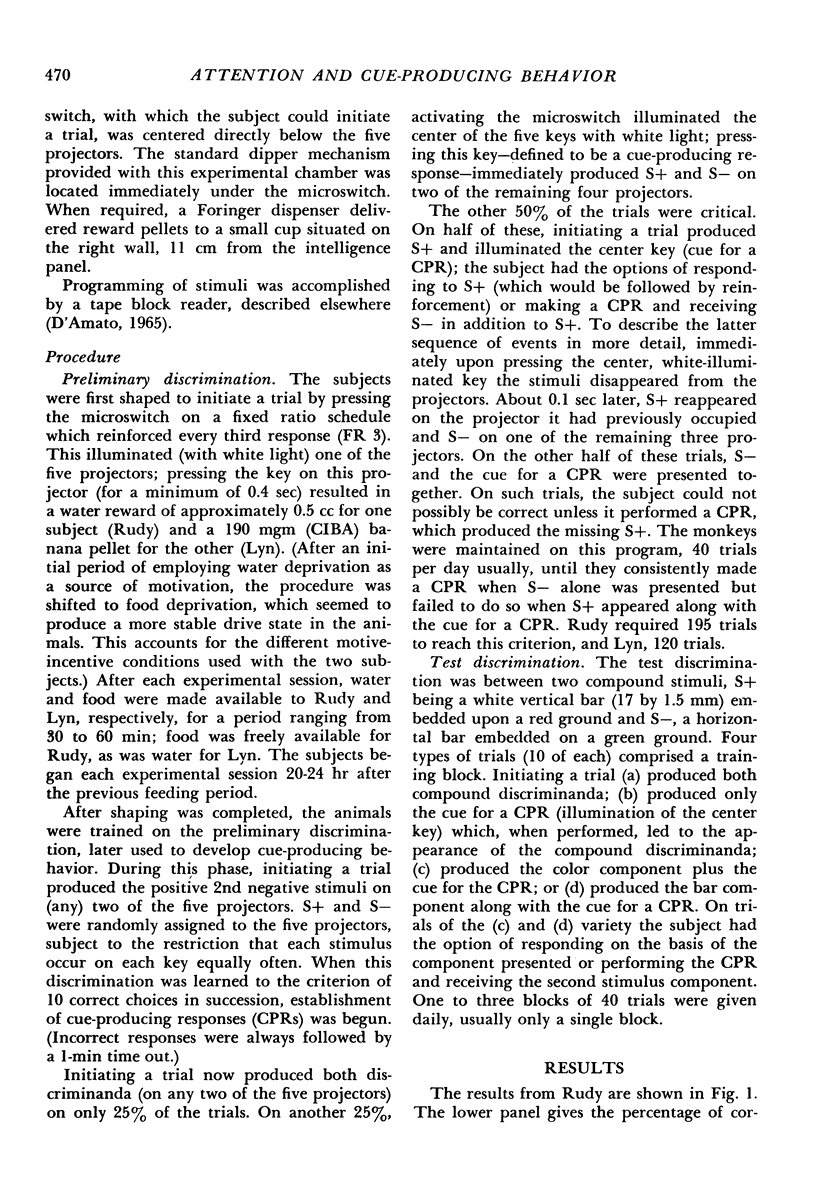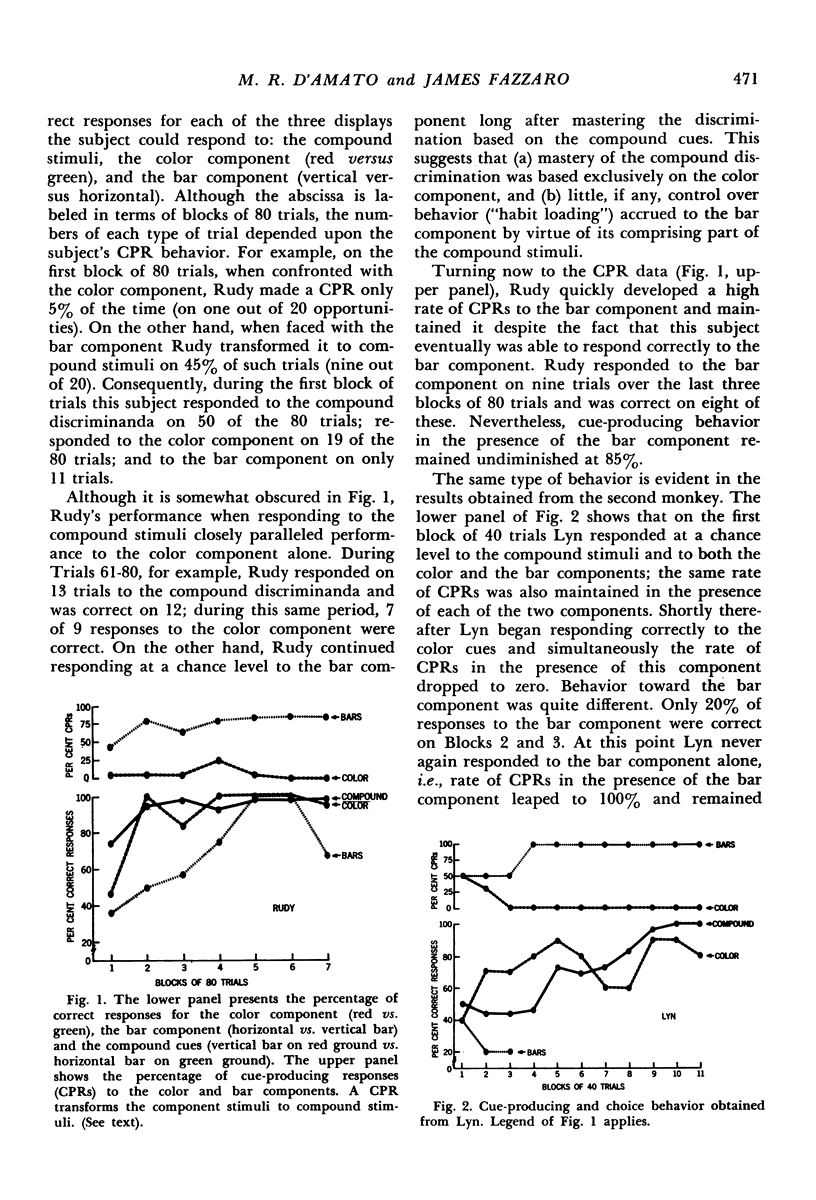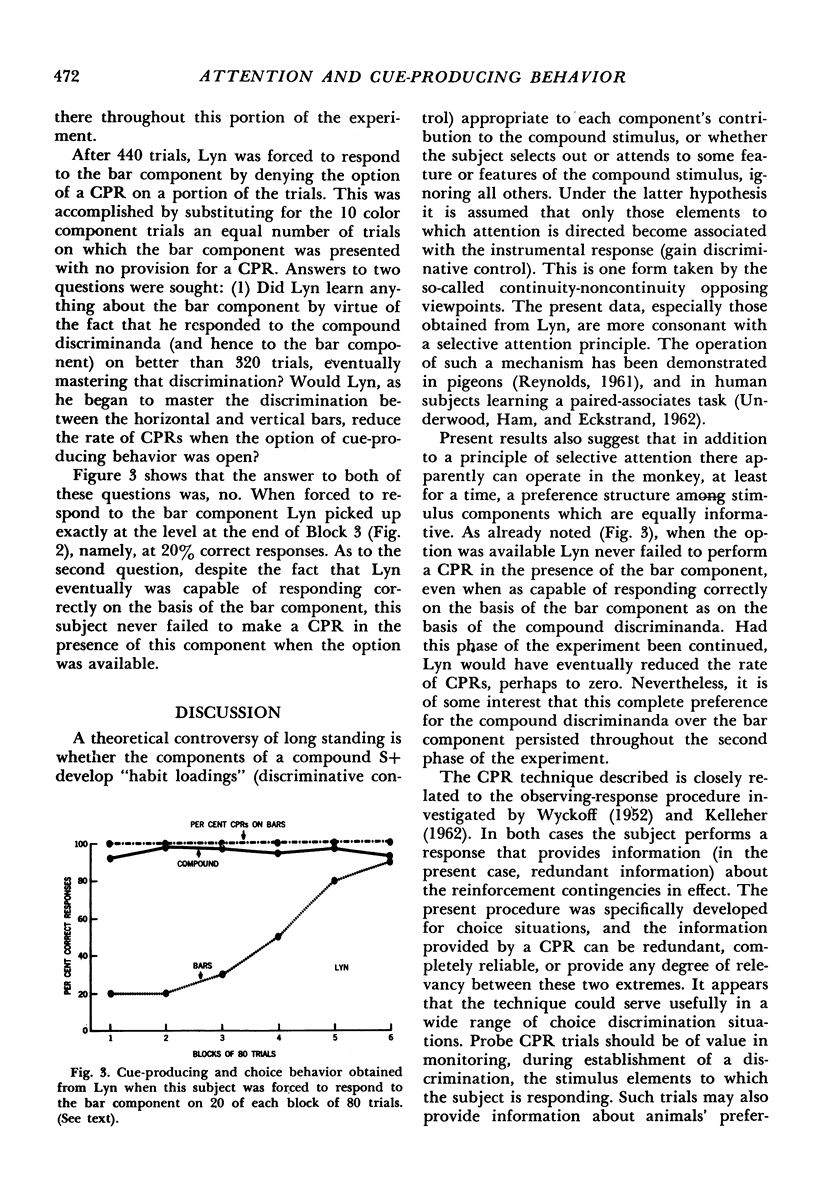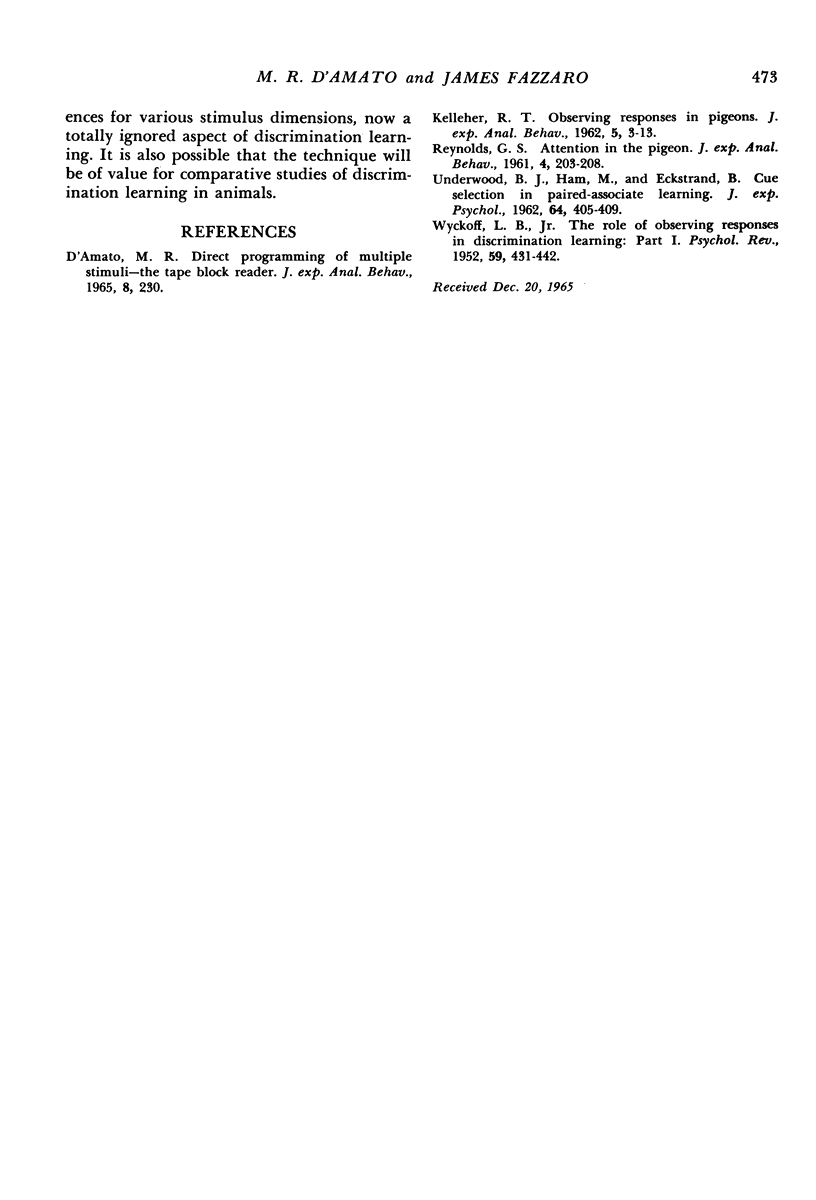Abstract
Explicit cue-producing responses were employed to study attending behavior in the monkey. The subjects learned a discrimination based on compound stimuli, a vertical bar embedded on a red ground versus a horizontal bar on a green ground. On some trials only one of the two stimulus components was presented (red versus green or vertical versus horizontal bar), and the animals had the option of responding on the basis of the component presented or transforming it to the compound discriminanda by means of a cue-producing response. Analysis of the choice and cue-producing response behavior showed that (a) both monkeys acquired the discrimination between the compound cues solely on the basis of the color component, (b) mastery of this discrimination did not confer any “habit loading” (discriminative control) on the bar component, and (c) the monkey may prefer to respond on the basis of one component (color) even though it is capable of using both components equally effectively.
Full text
PDF




Selected References
These references are in PubMed. This may not be the complete list of references from this article.
- KELLEHER R. T., RIDDLE W. C., COOK L. Observing responses in pigeons. J Exp Anal Behav. 1962 Jan;5:3–13. doi: 10.1901/jeab.1962.5-3. [DOI] [PMC free article] [PubMed] [Google Scholar]
- REYNOLDS G. S. Attention in the pigeon. J Exp Anal Behav. 1961 Jul;4:203–208. doi: 10.1901/jeab.1961.4-203. [DOI] [PMC free article] [PubMed] [Google Scholar]
- UNDERWOOD B. J., HAM M., EKSTRAND B. Cue selection in paired-associate learning. J Exp Psychol. 1962 Oct;64:405–409. doi: 10.1037/h0047342. [DOI] [PubMed] [Google Scholar]
- WYCKOFF L. B., Jr The role of observing responses in discrimination learning. Psychol Rev. 1952 Nov;59(6):431–442. doi: 10.1037/h0053932. [DOI] [PubMed] [Google Scholar]


